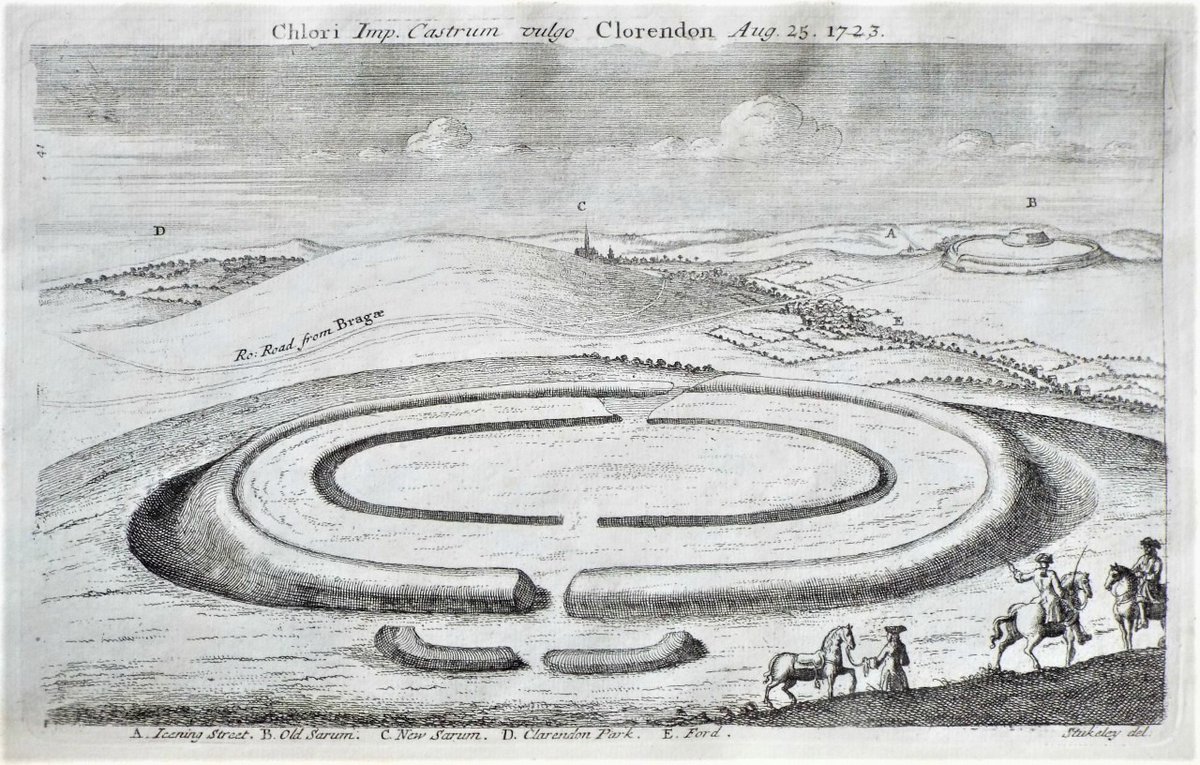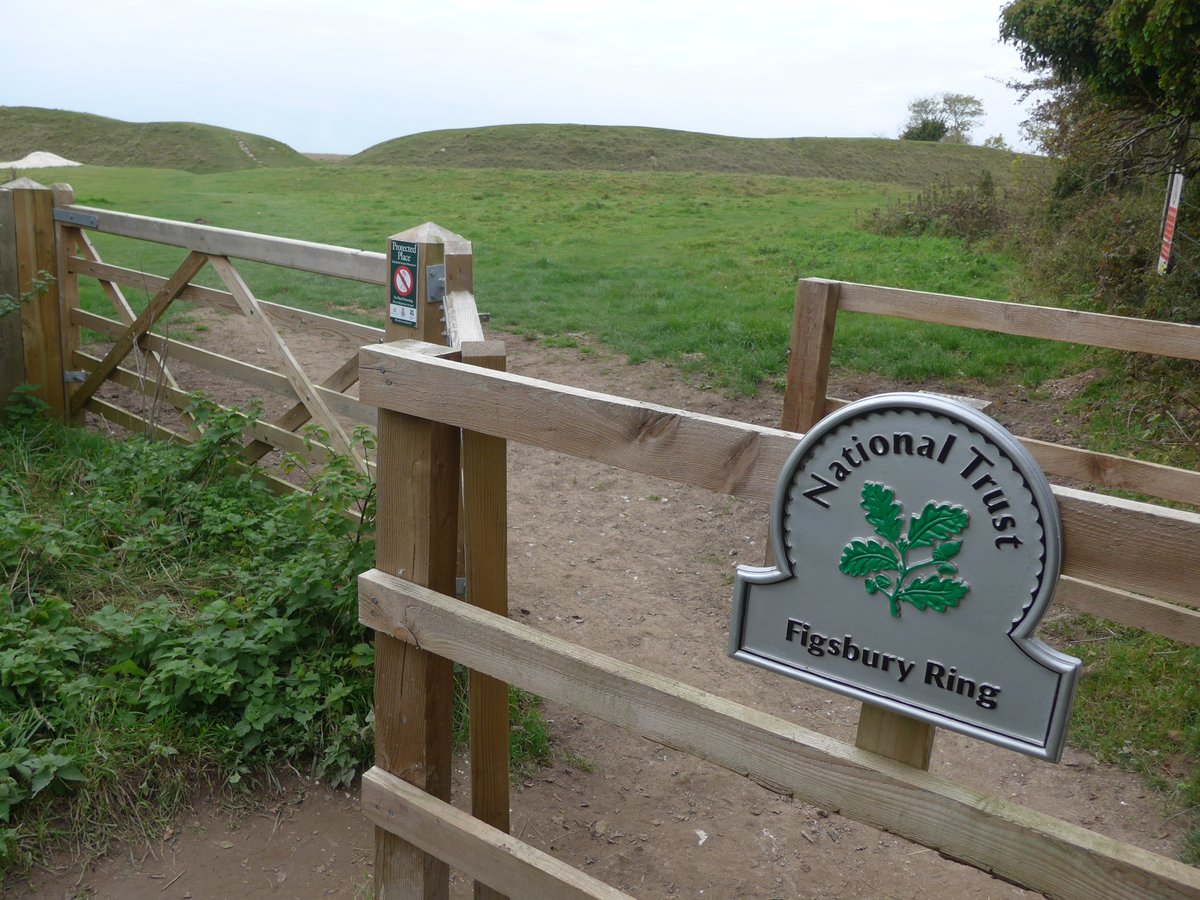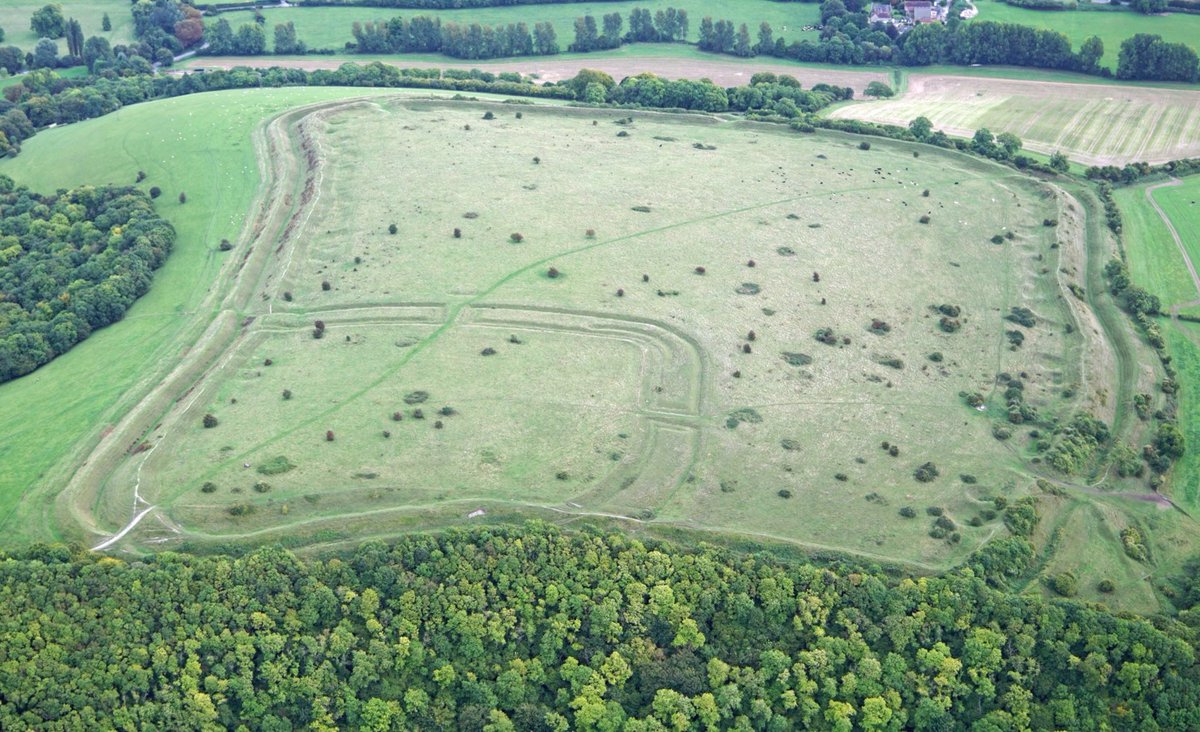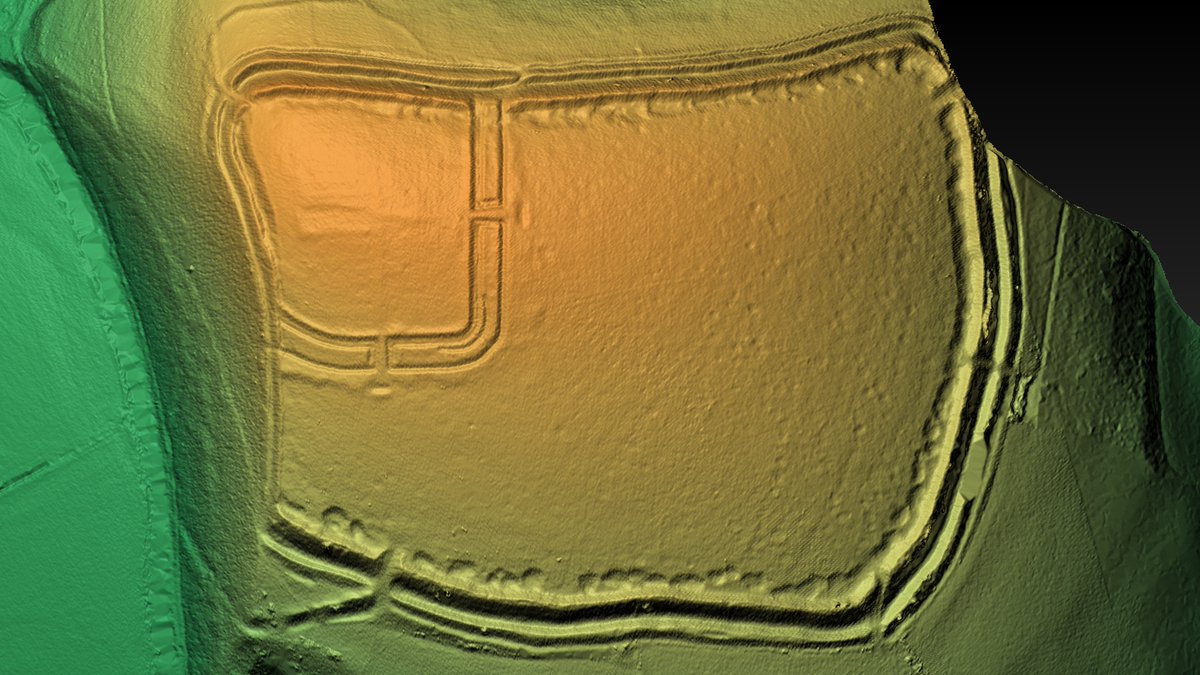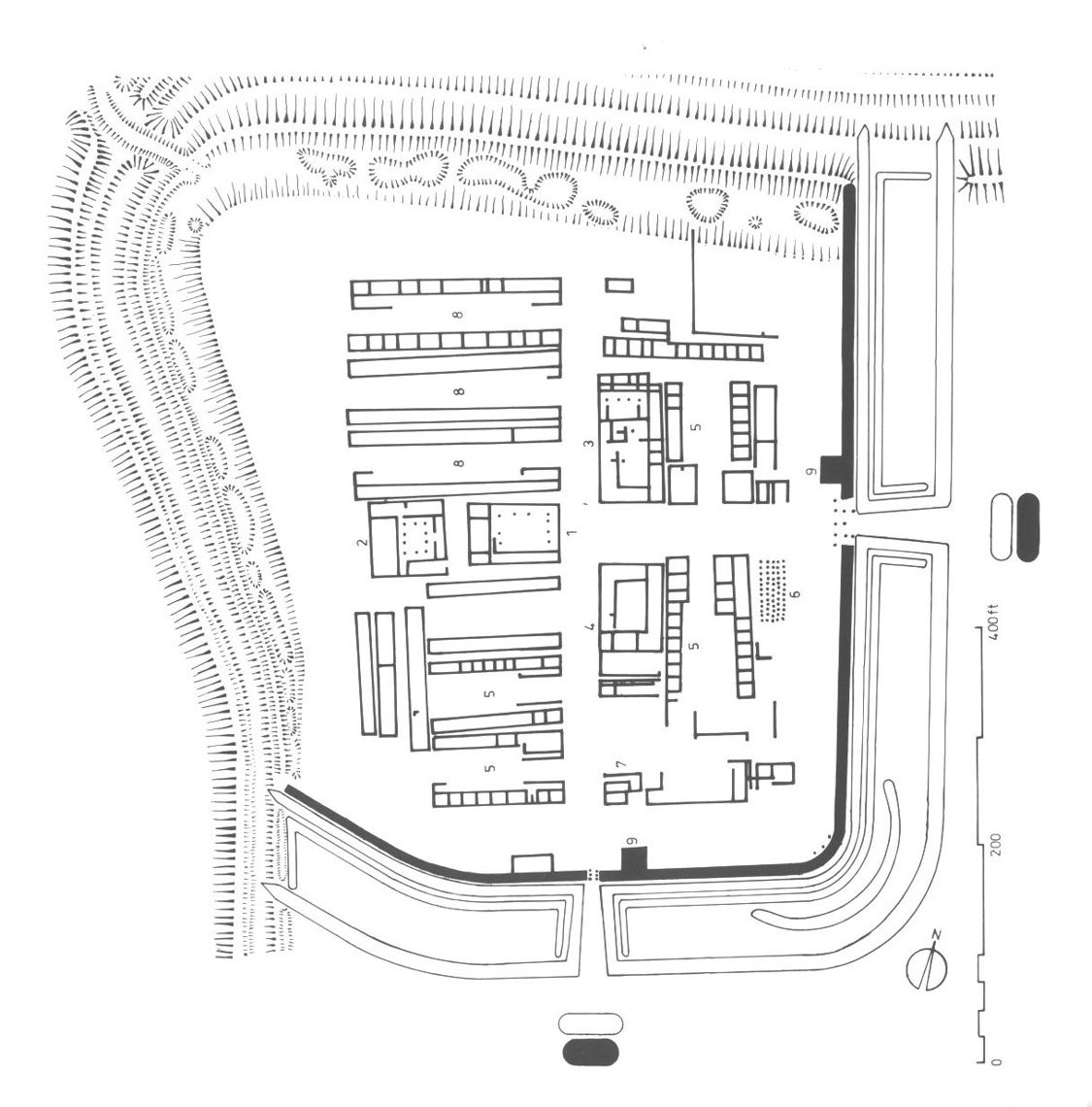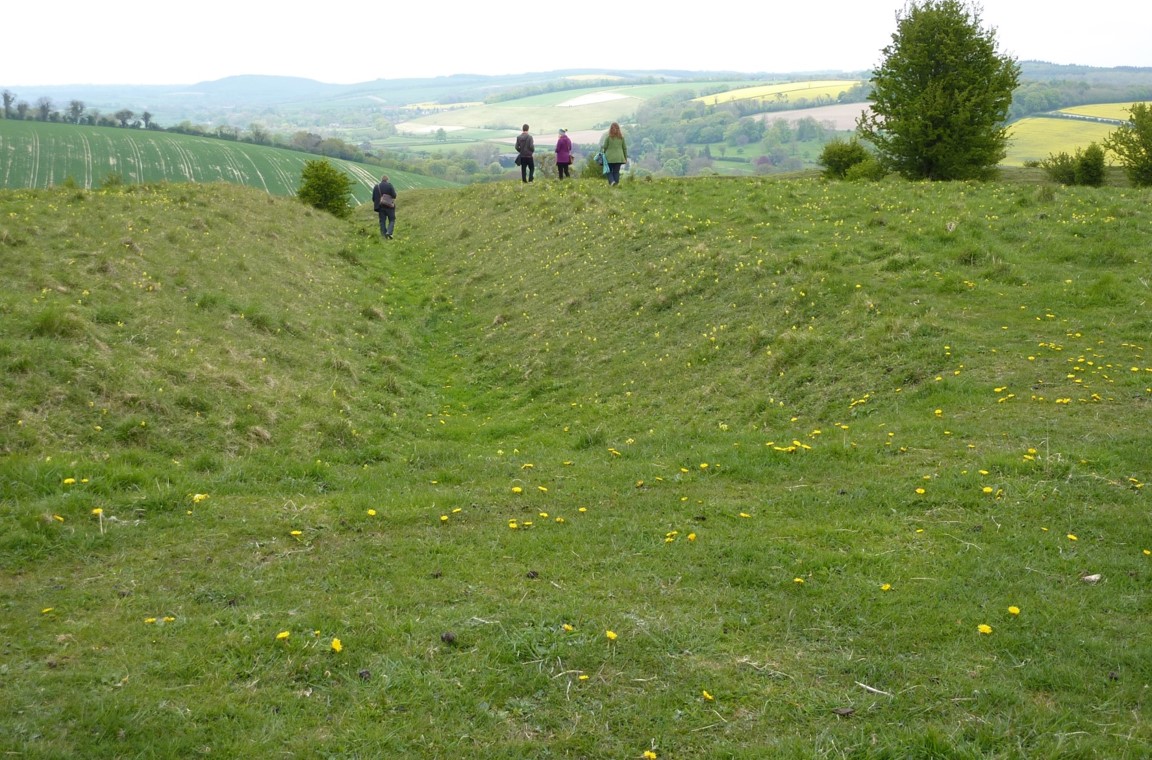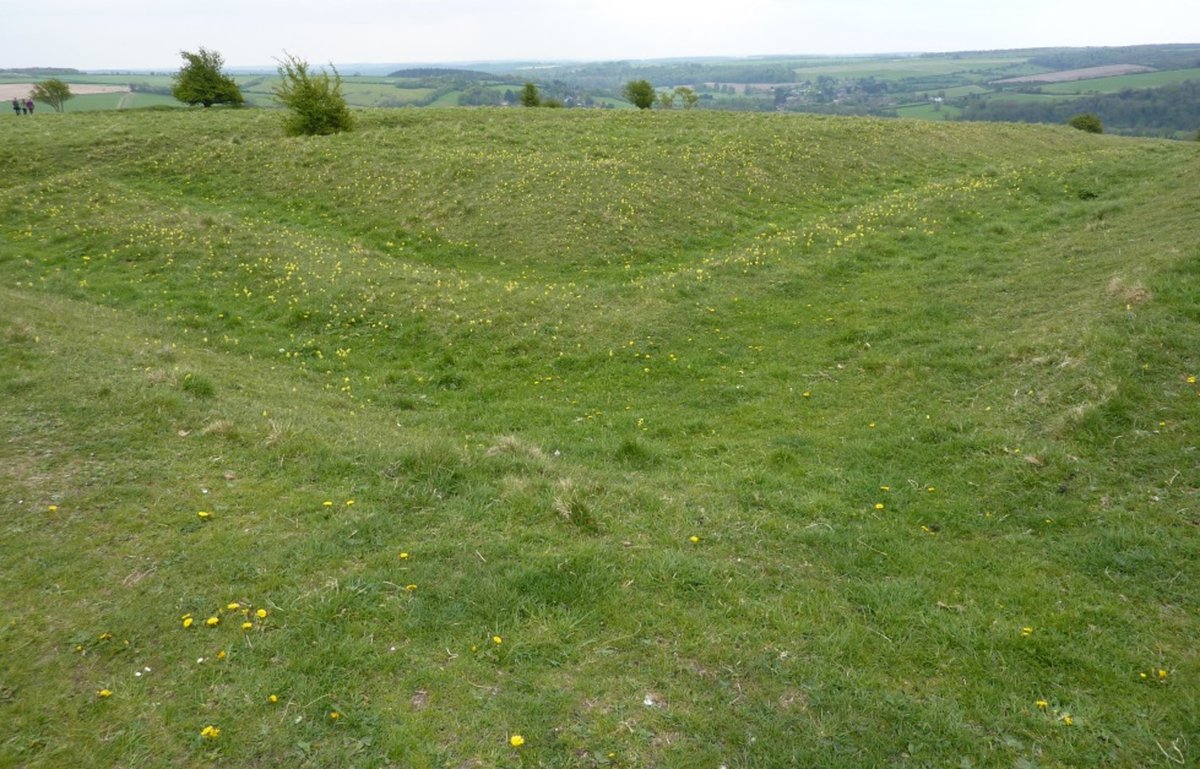
It’s #HillfortsWednesday (huzzah!)
Today we’re looking down on the mighty Maiden Castle #Dorset @EnglishHeritage
It's impressive today, but how did it look in prehistory?
A thread on our favourite recreations / reconstructions from books, guides and on-site signage 👇👇


Today we’re looking down on the mighty Maiden Castle #Dorset @EnglishHeritage
It's impressive today, but how did it look in prehistory?
A thread on our favourite recreations / reconstructions from books, guides and on-site signage 👇👇
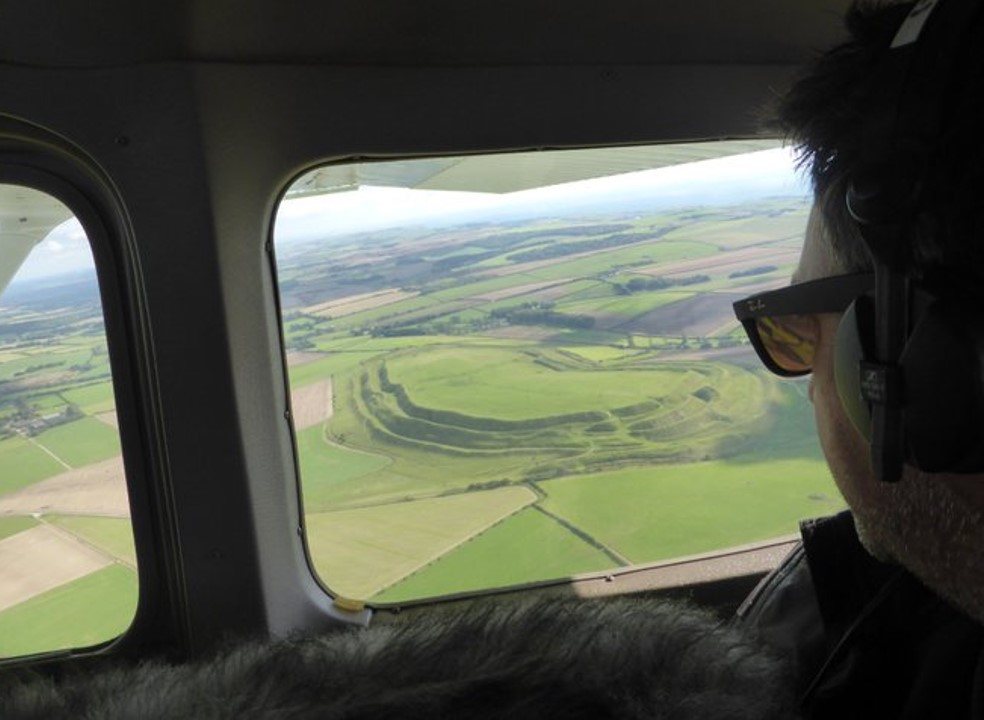


Arguably the most famous hillfort in Britain, the multivallate Maiden Castle #Dorset encloses over 17ha and comprises many phases of construction and modification the appearance of which can be difficult to convey
📷 looking south © Jo and Sue Crane 2016
#HillfortsWednesday
📷 looking south © Jo and Sue Crane 2016
#HillfortsWednesday

The earliest built phase at Maiden Castle #Dorset was an Early Neolithic causewayed enclosure (c. 3550 BC)
Recreations of this period are comparatively rare, so this wonderful image © Miranda Schofield / English Heritage is particularly welcome 😊👍
#HillfortsWednesday
Recreations of this period are comparatively rare, so this wonderful image © Miranda Schofield / English Heritage is particularly welcome 😊👍
#HillfortsWednesday

After the abandonment of the Maiden Castle causewayed enclosure, a 540m long E-W aligned bank ‘barrow’ with flanking ditches was constructed
Ploughing has since denuded these Neolithic monuments, gloriously recreated here © Peter Dunn / English Heritage
#HillfortsWednesday
Ploughing has since denuded these Neolithic monuments, gloriously recreated here © Peter Dunn / English Heritage
#HillfortsWednesday

One of the earliest attempts to reconstruct Maiden Castle hillfort in its developed Middle Iron Age phase (c 400 BC) was this stunning recreation © Alan Sorrell looking east (over the west gate) for Barbara Green’s 1968 book *Prehistoric Britain*
#HillfortsWednesday
#HillfortsWednesday

A magnificent recreation of Maiden Castle in its Middle Iron Age phase © Peter Dunn / English Heritage looking north
It shows perhaps fewer roundhouses than the geophysical survey suggests, but gives a great idea of the developed hillfort in its heyday
#HillfortsWednesday
It shows perhaps fewer roundhouses than the geophysical survey suggests, but gives a great idea of the developed hillfort in its heyday
#HillfortsWednesday

An aerial view of Maiden Castle over the west gate looking east © Paul Birkbeck / English Heritage shows fewer (larger) roundhouses than indicated by excavation and geophysical survey, but gives an excellent idea of the appearance of the developed hillfort
#HillfortsWednesday
#HillfortsWednesday
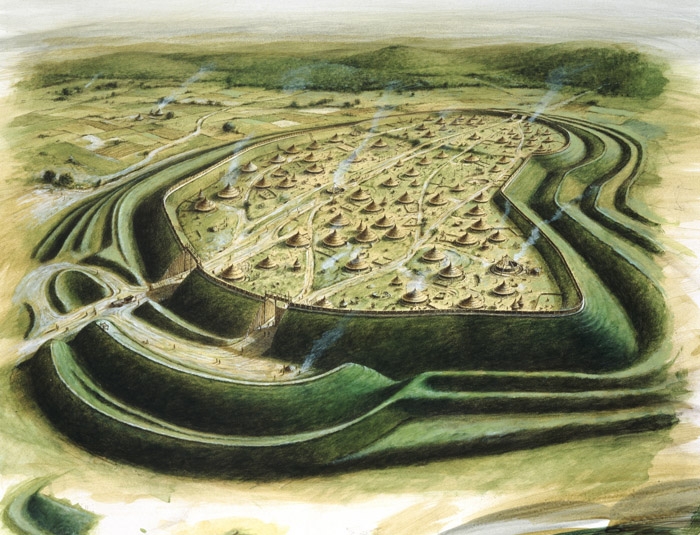
This stunning aerial recreation of Maiden Castle #Dorset © Peter Urmston / English Heritage gives an updated alternative take on the formidable western gated entrance, providing a clear overview of the hillfort’s internal Iron Age road / settlement structure
#HillfortsWednesday
#HillfortsWednesday

Part of the Iron Age west gate to Maiden Castle hillfort © Rebecca Strickson / Royal Mail, one of a set of images commemorating *Prehistoric Treasures* on stamps in 2017
We love the *Now and Then* overlay, prehistory lying ghost-like on top of a photo 🤩
#HillfortsWednesday
We love the *Now and Then* overlay, prehistory lying ghost-like on top of a photo 🤩
#HillfortsWednesday

A wonderfully evocative imagining of an Iron Age charioteer and family parading before an audience outside the west gate of Maiden Castle hillfort © Angus McBride / Osprey Publishing for 1985 book *Rome’s Enemies (2): Gallic and British Celts* by Peter Wilcox
#HillfortsWednesday
#HillfortsWednesday

Another great Late Iron Age equestrian-based re-imagining of the west gate to Maiden Castle hillfort this time © Peter Connolly and used as the cover for the 1977 book *The Celts: Peoples of the Past* by Robin Place
#HillfortsWednesday
#HillfortsWednesday

Following work by Tess and Mortimer Wheeler and Niall Sharples at Maiden Castle, there have been many attempts to recreate the settlement
This gorgeous painting © Miranda Schofield / English Heritage shows the 2nd phase of Iron Age occupation in the SW corner #HillfortsWednesday
This gorgeous painting © Miranda Schofield / English Heritage shows the 2nd phase of Iron Age occupation in the SW corner #HillfortsWednesday

The 3rd major phase of Middle Iron Age settlement in the SW corner of Maiden Castle, with rows of roundhouses now aligned to a system of internal roads
© Miranda Schofield / English Heritage
Love the *people detail* 😍
#HillfortsWednesday
© Miranda Schofield / English Heritage
Love the *people detail* 😍
#HillfortsWednesday
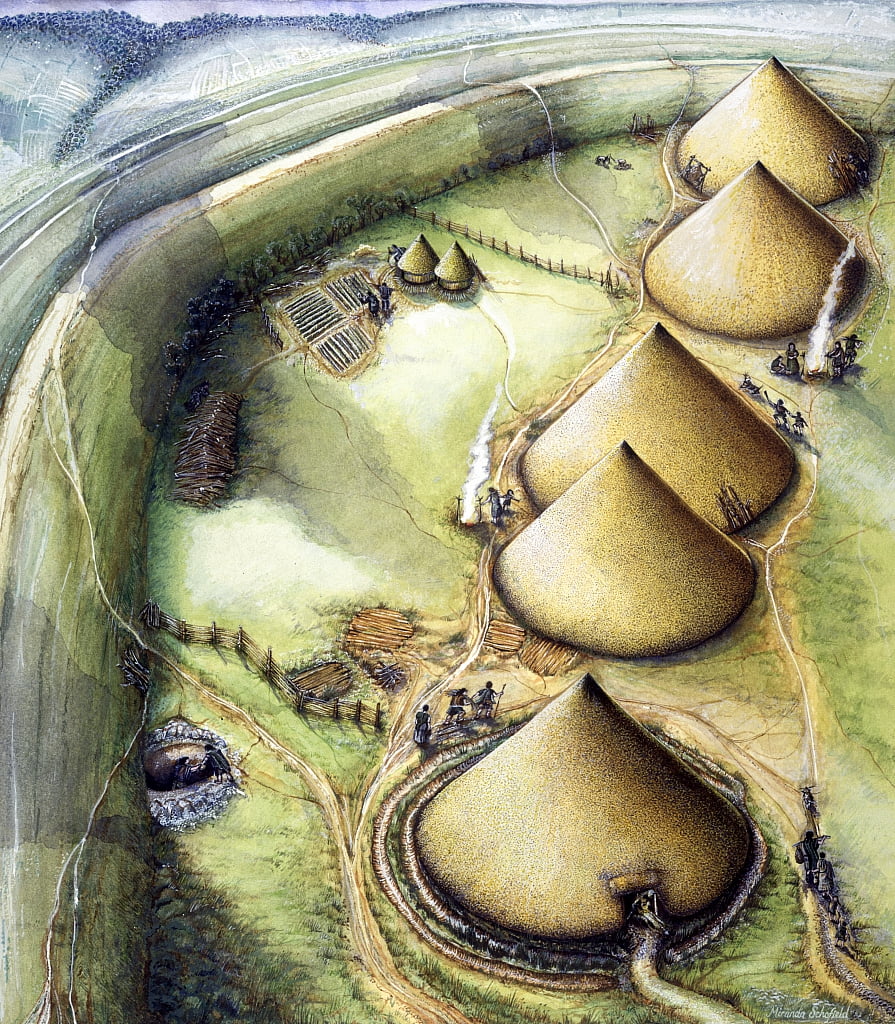
An updated reconstruction of well-organised Middle Iron Age activity in the SW corner of Maiden Castle hillfort © Peter Urmston / English Heritage
Who says there were no towns in Britain before the Romans?
#HillfortsWednesday
Who says there were no towns in Britain before the Romans?
#HillfortsWednesday

Close up detail of Middle Iron Age roundhouses, granaries and associated activity in the SW corner of Maiden Castle hillfort © Paul Birkbeck / English Heritage
We love the human detail (especially clothes drying on a thatched roof) 😍👍
#HillfortsWednesday
We love the human detail (especially clothes drying on a thatched roof) 😍👍
#HillfortsWednesday

Inside a Middle Iron Age roundhouse in the SW corner of Maiden Castle hillfort © Paul Birkbeck / English Heritage
Prehistoric family life doesn’t always feature in modern reconstructions (and children rarely make an appearance) so this is excellent 🤩👍
#HillfortsWednesday
Prehistoric family life doesn’t always feature in modern reconstructions (and children rarely make an appearance) so this is excellent 🤩👍
#HillfortsWednesday

An aspect of Maiden Castle that features in many modern reconstructions is the attack by the II Augusta legion in AD 44
This dramatic recreation © Alan Sorrell appeared in Aileen Fox’s 1961 book *Roman Britain*
The original was sadly destroyed in 1940
#HillfortsWednesday
This dramatic recreation © Alan Sorrell appeared in Aileen Fox’s 1961 book *Roman Britain*
The original was sadly destroyed in 1940
#HillfortsWednesday

A diorama showing the Roman siege of Maiden Castle on display in the always excellent @NotheFort
Photo © Andy Whiting / @awdorset
The model certainly has impact, even if the interpretation of a Roman attack is now in question
onlinelibrary.wiley.com/doi/full/10.11…
#HillfortsWednesday
Photo © Andy Whiting / @awdorset
The model certainly has impact, even if the interpretation of a Roman attack is now in question
onlinelibrary.wiley.com/doi/full/10.11…
#HillfortsWednesday

A composite cluster of Celts (Durotrigian slinger, Arvernian archer and Caledonian swordsman) at Maiden Castle in this lively recreation © Angus McBride / Osprey Publishing for @OspreyBooks 1985 *Rome’s Enemies (2): Gallic and British Celts* by Peter Wilcox
#HillfortsWednesday
#HillfortsWednesday

Iron Age warriors at the east gate of Maiden Castle #Dorset
An emotive and powerful recreation © Nikholai Zubkhov for @Lindsay_Powell’s article *The Siege of Maiden Castle, AD 44* appearing in @ancientwarfare Vol 6 (6) Feb/Mar 2013
#HillfortsWednesday
An emotive and powerful recreation © Nikholai Zubkhov for @Lindsay_Powell’s article *The Siege of Maiden Castle, AD 44* appearing in @ancientwarfare Vol 6 (6) Feb/Mar 2013
#HillfortsWednesday

A brilliant series of images originally used on the @EnglishHeritage website for Maiden Castle to illustrate the possible Roman attack in AD 44 (with and without palisade) © Paul Birkbeck / English Heritage
english-heritage.org.uk/visit/places/m…
#HillfortsWednesday


english-heritage.org.uk/visit/places/m…
#HillfortsWednesday



We don’t know who painted this picture of Britons evicted from Maiden Castle in Robin Place’s 1977 book *The Celts: Peoples of the Past* but it neatly sums up the idea that the Durotriges were removed by the #Roman army
Other interpretations are available
#HillfortsWednesday
Other interpretations are available
#HillfortsWednesday

A brilliant recreation of the Romano Celtic temple, built atop Maiden Castle hillfort in the late 3rd / 4th century AD, and excavated by Tessa Verney and Mortimer Wheeler in the 1930s © Peter Dunn / English Heritage
#HillfortsWednesday
#HillfortsWednesday

An updated reconstruction of the #Roman temple complex on Maiden Castle #Dorset © Peter Urmston / English Heritage
We don’t know who was worshipped here within the long-abandoned hillfort, but it was probably a god or goddess of the local Durotriges
#HillfortsWednesday
We don’t know who was worshipped here within the long-abandoned hillfort, but it was probably a god or goddess of the local Durotriges
#HillfortsWednesday

To learn more about Maiden Castle, visit the excellent @EnglishHeritage website
english-heritage.org.uk/visit/places/m…
You can dip into their excellent ECHOSCAPE immersive audio visual experience connecting memories and imagination
english-heritage.org.uk/visit/places/m…
Happy #HillfortsWednesday everyone!
english-heritage.org.uk/visit/places/m…
You can dip into their excellent ECHOSCAPE immersive audio visual experience connecting memories and imagination
english-heritage.org.uk/visit/places/m…
Happy #HillfortsWednesday everyone!

• • •
Missing some Tweet in this thread? You can try to
force a refresh




